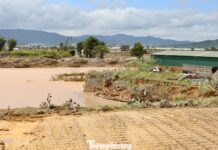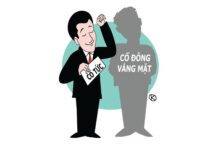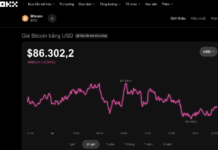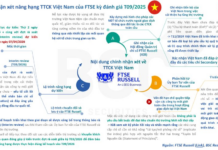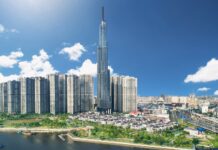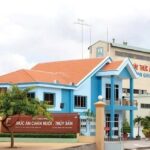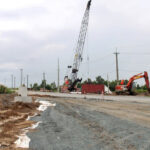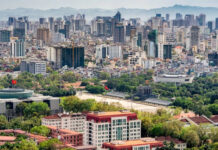“Tangible Assets”: Retaining Value in Downturns, Surging with Infrastructure Development
The fourth quarter of every year marks the period when investors rebalance their portfolios, increasing their allocation to safe assets with potential for appreciation as new cycles begin. Amid rising bank interest rates that remain less attractive compared to current market prices, and continuous volatility in financial markets, capital is shifting back to real estate. Notably, the low-rise segment in Hanoi stands out due to its limited supply, intrinsic value, and stable growth potential.
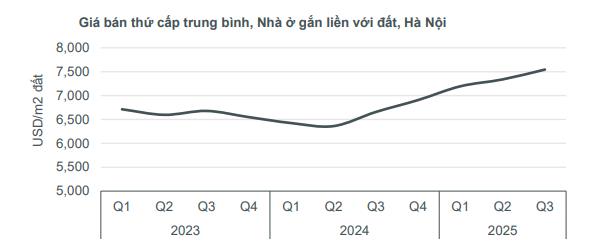
During market corrections, investors tend to shift from short-term investments to tangible assets with real utility. In Hanoi, villas and townhouses have become a “safe haven” due to three key factors: limited land availability, meeting real housing demand, and scarce supply.
According to CBRE, new villa and townhouse supply in Hanoi during Q3/2025 dropped by nearly 80% year-on-year, yet transaction volumes still exceeded new launches, highlighting strong demand and absorption in the low-rise segment.
Savills’ Q3/2025 market report also indicates that low-rise property values continue to rise, driven by high-quality projects and infrastructure development. Primary prices increased by 4-9%, while secondary prices rose by 5-8% quarter-on-quarter.
Matthew Powell, Director of Savills Hanoi, notes, “Low-rise property values remain on an upward trajectory, supported by high-quality projects, future infrastructure improvements, and potential new supply from reputable developers.”
These figures reinforce the position of Hanoi’s villas and townhouses as a stable investment across all cycles, retaining value while surging with infrastructure implementation—a clear testament to their “defensive” nature.
In Hanoi, numerous key projects such as ring roads, bridges over the Red River, radial road networks, and connections to Tay Ho Tay, Hoai Duc, and Co Nhue are entering the implementation phase. Historically, land prices in areas benefiting from infrastructure have always led the way and continued to rise post-completion. This is why low-rise inner-city properties are highly valued: they serve as both a “safe asset vault” and a powerful “price growth engine” driven by infrastructure and planning.
Why Do Investors Prioritize “Dual-Purpose Assets”?
Unlike many segments reliant on large supply or short investment cycles, Hanoi’s low-rise market operates on a very narrow supply-demand balance. Each quarter, the market sees limited new primary supply, making existing products irreplaceable “rare gems.”
This unique market structure—low supply, long-term holders, and financially capable buyers—creates stable liquidity, even during downturns. Even in the slowest periods, significant transactions occur, showcasing the segment’s attractive demand. This is why, despite high values, these assets remain a preferred choice for seasoned investors.
Within this landscape, GIA22—the most prestigious villa subdivision of GIA by KITA in the Nam Thang Long Urban Area—Ciputra, stands out as one of the few projects embodying “defensive yet cyclical growth” criteria. With 164 villas, GIA22’s limited supply is a core factor in maintaining its value and appeal among discerning investors.
The scarcity of high-quality inner-city projects like GIA22 makes it a magnet for capital, balancing long-term stability with infrastructure-driven value appreciation. Its completed legal framework and prime location adjacent to the 65-hectare Central Park—a key component of the Tay Ho planning—offer advantages few projects can match. The “Best Luxury Housing Development” award at the PropertyGuru Vietnam Property Awards 2025 further cements GIA by KITA’s prestige in the high-end market.
In a fragmented market, capital is favoring “real” products with clear legal status, completed infrastructure, and immediate utility. Today’s investors prioritize “real liquidity” over “paper potential.” By meeting all these criteria, GIA22 emerges as a destination for smart capital: safe in value, distinctive in lifestyle, and poised for significant appreciation as Hanoi’s infrastructure and planning progress.
GIA by KITA is a premium real estate project developed by KITA Group, an urban developer with a portfolio spanning from North to South. Notable projects include Kieu by KITA, a luxury apartment complex in central Saigon, and KITA Airport City, a pioneering urban development in Can Tho. Hoa Lac Metro City, a TOD (Transit-Oriented Development) pioneer in Hoa Lac, applies a model popular in developed nations.
With a commitment to sustainable development, social responsibility, and environmental stewardship, KITA Group has become a trusted partner in major Vietnamese projects and expanded collaborations with leading international enterprises.
An Giang Rice Export Giant Unveils Bold New Move
Two residential projects by An Giang Agricultural and Foodstuff Export JSC (AFIEX, stock code: AFX) are expected to be included in the pilot program under Resolution No. 171 in An Giang province.
Accelerating Efforts to Hand Over Entire Cà Mau – Đất Mũi Expressway Land by Mid-December
Cà Mau province is striving to complete 100% of the land clearance for the Cà Mau – Đất Mũi expressway by December 15th. To date, the province has allocated over 771 billion VND for land acquisition, with the remaining funds to be reviewed and fully arranged as directed by the Prime Minister.

